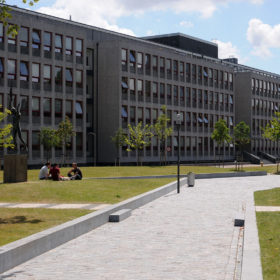CIGS solar cell with IBC structure and up to 19.7% efficiency

Scientists in the Netherlands have demonstrated an interdigitated back contact copper-indium-gallium-selenide solar cell with a sub-micron thickness of 673nm. The device has an aluminum oxide and magnesium fluoride-based anti-reflective coating.
Scientists at Delft University of Technology in the Netherlands have developed an interdigitated back contact (IBC), copper-indium-gallium-selenide (CIGS) solar cell with a sub-micron thickness of 673nm.
The Delft researchers said conventional, front/back‐contact (FBC) solar cells suffer optical losses due to parasitic absorption by their top layers which can prompt a 10% loss in photocurrent density. In addition, the scientists stated, “In the case of flexible CIGS solar cells, the metallic grid causes an additional optical shading, reducing even more the optical performance.”
The IBC cell designed by the Delft team was compared with an 11.9%-efficient FBC device supplied by Dutch institute Solliance Solar Research, with the Delft team focusing particularly on absorber performance.
The Delft cell featured a double-layer anti-reflective coating based on aluminum oxide (Al2O3) and magnesium fluoride (MgF2). “The optimal thicknesses of Al2O3 and MgF2 for this work are 80 and 85nm, respectively,” said the Delft group. “The Al2O3 layer at the front side of the absorber serves also as [a] chemical and electrical passivation layer.”
Reflector
The researchers placed a reflector on the rear side of their device to raise the probability of secondary absorption of photons.
A gallium‐doped zinc‐oxide (GZO) was used as an n‐doped transparent conductive oxide on the IBC cell. That compound is said to have high doping concentration, low absorption coefficient, high thermal stability and low free-carrier absorption.
With simulations between the two solar cells conducted by varying geometrical parameters and absorber material characteristics, the Delft device showed 17% efficiency. “Since the quality of our simulated absorber, from [a] defect-density point of view, is lower than the state‐of‐the‐art CIGS absorber material, we studied the effect of defect density on the cell performance,” the researchers stated. “We observed that by reducing the bulk defect density from 5×1013cm−3 to 1×1013cm−3, the efficiency can be improved to 19.7%.”
The researchers said the presence of negative fixed charges in the Al2O3 layer ensured electrical passivation and low recombination at small gap-width values. “We showed how an IBC structure with optimal bandgap grading and high absorber quality can help us achieve high efficiencies with sub-micron CIGS layers,” said the Delft group.
Commercialization
While accepting the costly patterning steps required to replicate the device could prove a hurdle to commercialization of their technology, the Delft team said their design could be particularly suitable for three and four‐terminal tandem solar devices.
The Delft solar cell is described in Interdigitated back‐contacted structure: A different approach towards high‐efficiency ultrathin copper indium gallium (di)selenide solar cells, published in Progess in Photovoltaics.
Scientists from the Helmholtz-Zentrum Berlin (HZB) in April announced they had achieved 24.16% efficiency with a tandem cell which combined CIGS and perovskite technology. That milestone took tandem device efficiency beyond the 23.35% record for a standalone 1cm² CIGS cell which was set by Solar Frontier in January last year.

